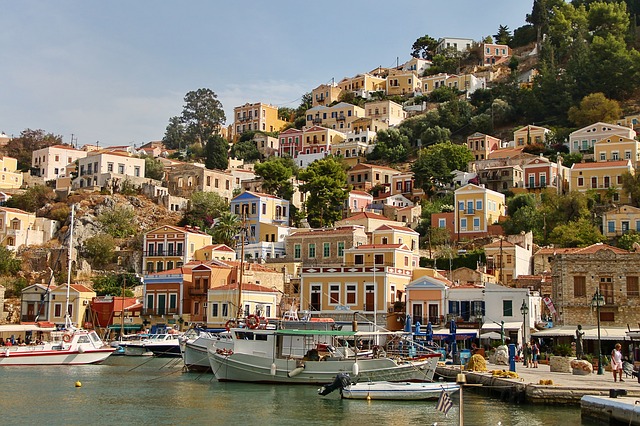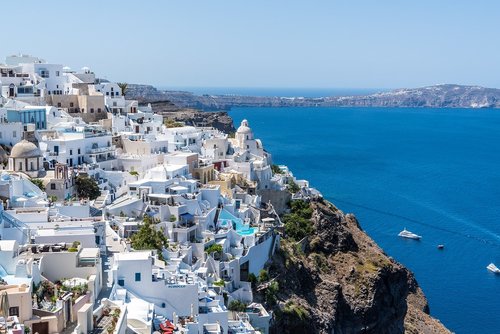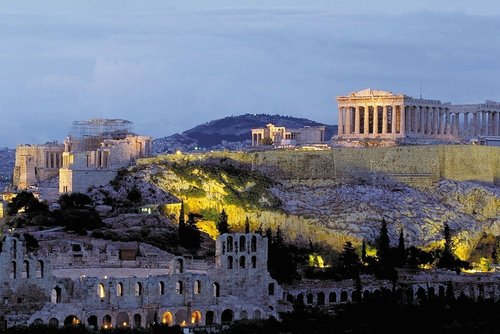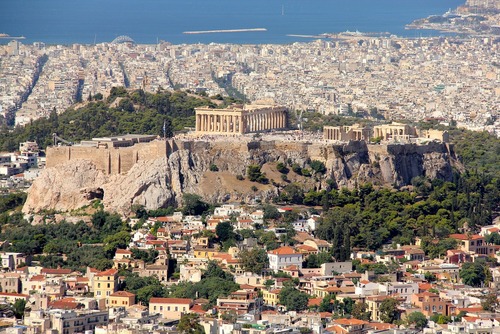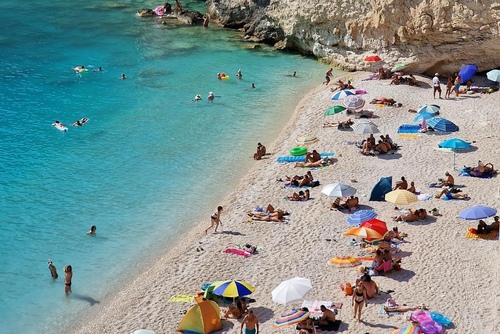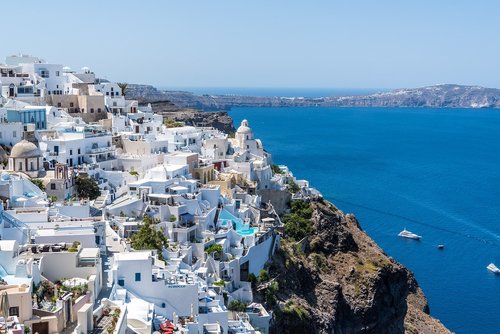Within the Dodecanese islands, Symi is situated off the northern coast of Rhodes, close to the Turkish mainland.
Symi is unique in both its customs and architecture; the obvious neo-classical influences are in contrast to the typical whitewashed buildings of the other Greek islands, and its history has led to a mix of nationalities and cultures.
History & Modern Influences
Symi has a long history dating back over 2000 years. The island is mentioned in Greek mythology, and was also part of the Roman, Byzantine and Ottoman Empires. In the early 20th century it was claimed by the Italians, and then occupied by the Nazis during the Second World War.
After a brief occupation by the British, it was formally re-joined with Greece in 1948. This turbulent past has meant that Symi is now home to various nationalities, and Greek, Italian and Turkish influences are evident.
Traditionally the island’s main industries are shipbuilding and sponge making, but now much of the economy is centred on tourism.
What to Expect
The island itself is mountainous, with a coastline made up of rocky cliffs and beaches.
The main town (also named Symi) is based around a port, with visitors arriving by boat from neighbouring islands. The trip from Rhodes takes approximately two hours and can be organised through tour operators; this transpires to be a very long day with a lot of travelling, so be prepared.
From the sea, the town doesn’t look real; instead it looks like a location for a children’s television show or a film set. The architecture has been heavily influenced by the neo-classical movement, with the buildings painted in pastel shades of blues, pinks and yellows, with stronger reds and oranges dotted around.
Regulations mean that all new buildings and renovations have to be created in the same style in order to preserve the unique quality of the town. The town itself is beautiful.
The harbour side is lined with stalls selling soaps and sponges, as well as traditional Greek souvenirs. While this is designed for tourists, there are several local shops and stalls situated in the less visited back streets.
Exploring the Island on a Tour
I would recommend seeing the island on an organised tour of Greece, it is likely that you will be given a guided tour followed by time to explore at your own pace.
The guides are extremely knowledgeable on the island’s history, however be aware that they work on commission from local businesses and will probably encourage you to visit certain shops and restaurants.
The town has many striking churches; one in particular has an amazing black and white tiled floor outside, along with bright stained glass windows. There is the option to walk up a number of stone steps to the old town set into the hillside, however even with directions I couldn’t find these steps anywhere!
This was a shame as I’d have liked to have seen the older buildings which overlook the harbour, but on the positive side we did discover great Greek salads at a waterfront café run by a friendly Australian.
The next stop is the Greek Orthodox Monastery of Panormitis. The journey around the coast takes approximately 45 minutes by boat, and the impressive Venetian-style building is situated at the water’s edge.
Still home to practising monks, the monastery is also open to tourists for both over-night stays and day trips, with several rooms converted into accommodation.
The inner courtyard houses the sacred chapel, where visitors are invited to give offerings to the Archangel Michael. The monastery boasts the highest baroque bell tower in the world, as well as two museums housing ecclesiastical artefacts and folk art.
What to Expect
Symi is a great island to visit if you are looking for something slightly different from the Greek holiday resorts and want to experience a town that hasn’t been purpose built for tourism.
Even though tourism keeps the island going, this isn’t evident in the architecture, and it is clear that there is a whole community living and working in what is essentially a traditional Greek seaside town.
By Hayley Bateman
Related Pages

